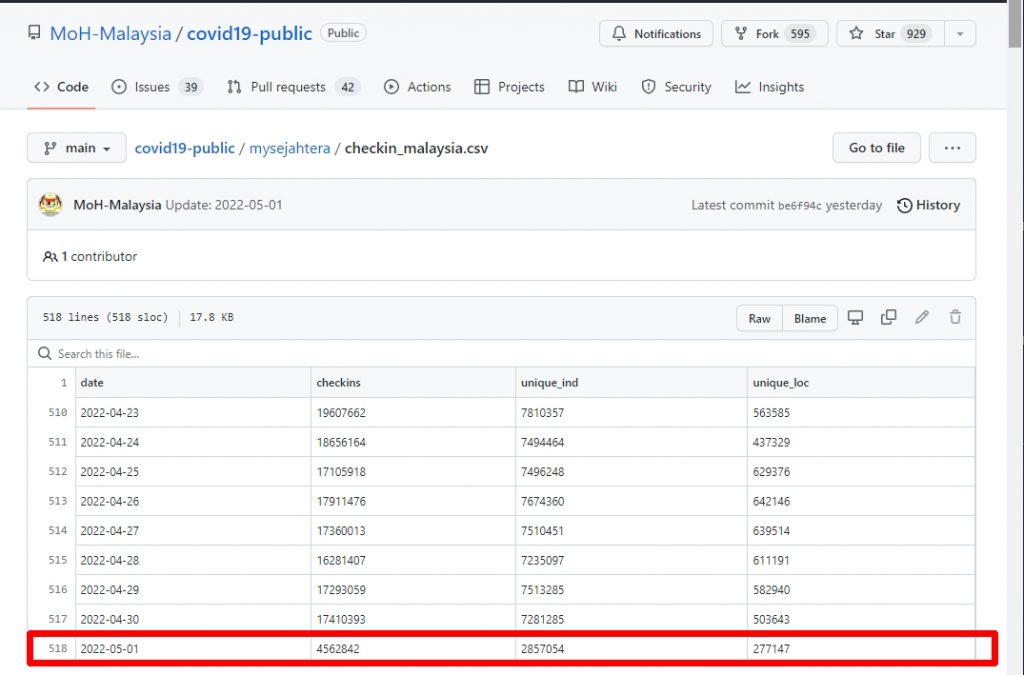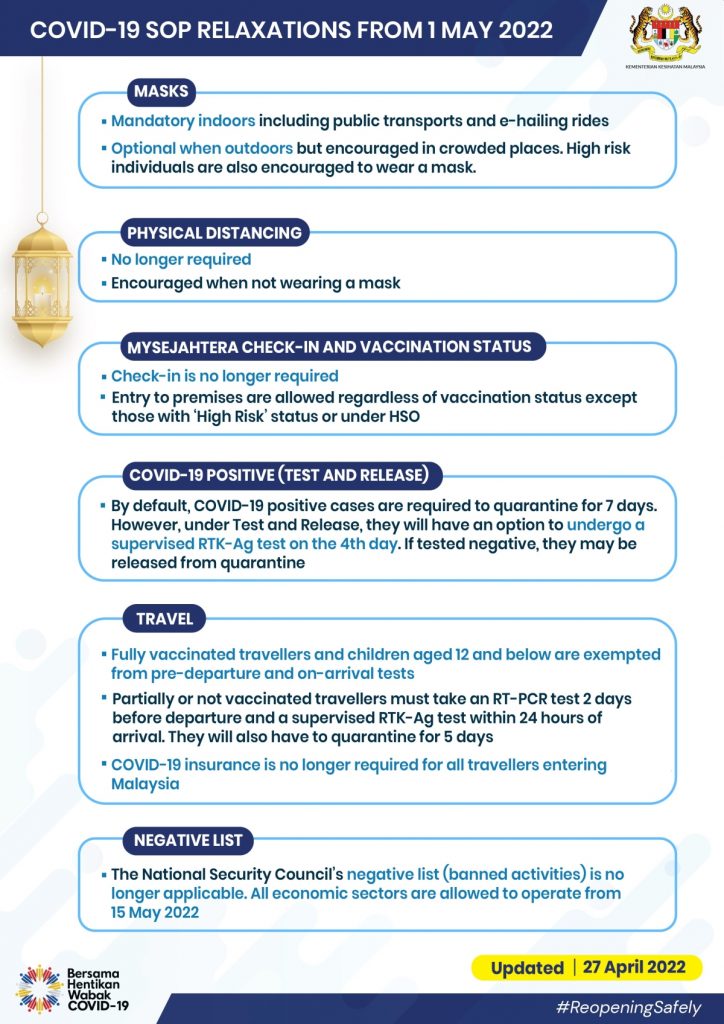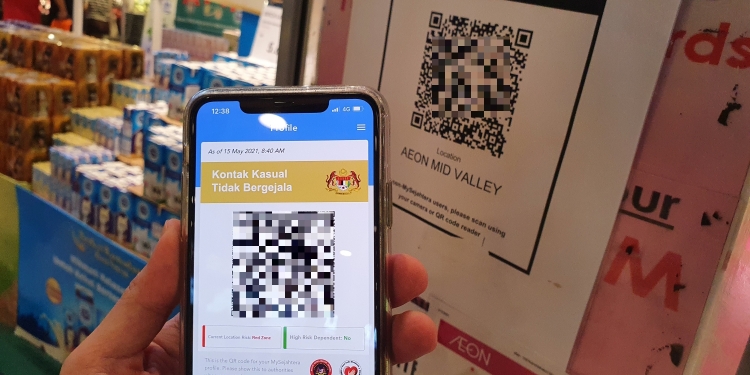Usage of MySejahtera nationwide plunged 73.8 per cent with immediate effect on May 1, the date the government lifted the mandatory use of the mobile app to check in their presence at premises.
The difference was stark across the board in the statistics for daily check-ins, unique locations checked in, and unique users logged between before and after the enforcement dates of the revised standard operating procedures.
The data was gathered from what was published on the Health Ministry’s Github portal.

Looking at the data, Malaysia recorded just 4,562,842 daily check-ins on May 1 compared to 17,410,393 total check-ins on April 30.
The number of unique accounts also dropped 60.8 per cent, with only 2,857,054 recorded on May 1 compared to 7,281,285 unique users logged on April 30.
Overall, the number of unique premises checked in was halved from 503,643 logged on April 30 to 277,147 last Sunday.
How the states compare
Malaysia’s most developed state Selangor had the highest usage of MySejahtera app prior to the mandate being lifted.
On April 30, daily check-ins in Selangor stood at 3,952,970. The next day, the number dropped sharply to just 950,038. This decline was 75.9 per cent.
Selangor also saw just 684,033 for its number of unique accounts checked in on May 1, a drop of 67.9 per cent from 2,134,879 logged on April 30.
The state also saw only 55,410 unique premises checked in on May 1 compared to 104,387 on April 30.
The data was similar in neighbouring Kuala Lumpur.
The national capital saw just 608,186 daily check-ins on May 1 from 2,816,509 recorded on April 30, a drop of 78.4 per cent.
The number of unique accounts checked in on May 1 was at 448,104 and also saw a drop of 67.9 per cent from 2,134,879 on April 30.
The nation’s first federal territory saw only 31,862 unique premises checked into on May 1.
This was a difference of 45 per cent compared to 58,572 unique premises checked into on April 30.
Johor also saw a significant decrease in daily check-ins from 1,960,109 on April 30 to just 559,923 on May 1, a noticeable drop of 71.4 per cent.
In the north, Perak also saw a considerable decrease of 70.2 per cent from 1,154,978 daily check-ins recorded on April 30 to 344,308 on May 1.
Similarly, Penang saw a decrease of 70.9 per cent from 1,083,431 daily check-ins recorded on April 30 to 315,504 on May 1.
Across the South China Sea, a 74.5 per cent drop in daily check-ins from 1,466,772 on April 30 to 374,552 on May 1 was observed in Sarawak.
Sabah saw a drop of 66.9 per cent from 1,288,866 on April 30 to 426,182 on May 1.
However, the most glaring difference is observed in the two federal territories of Putrajaya and Labuan at 88.4 per cent and 80.9 per cent respectively.
In Labuan, a mere 9,852 daily check-ins were logged on May 1, compared to 51,719 on April 30.
The federal administrative capital of Putrajaya saw just 13,480 daily check-ins on May 1 compared to 116,184 on April 30.

The MySejahtera mandate is only one of several COVID-19 measures the federal government introduced and is now rolling back as the nation transitions towards endemicity.
While the mandatory QR code scanning through MySejahtera and vaccination status verification before entering premises have been discontinued, business owners are still required to screen patrons who are under COVID-19 quarantine.
Other mandates that have been relaxed include wearing face masks outdoors. It is now only a must indoors, including inside public transport.
However, many Malaysians have been erring on the side of caution so far and can still be seen keeping their face masks on when outdoors. — Malay Mail
Related reading
- MOH: Wearing face mask outdoors and MySejahtera check-ins no longer required from 1st May
- You can now add MySejahtera vaccine cert on Apple Wallet, here’s how
- European Union recognises MySejahtera as equal to its Digital Covid Certificate
- Khairy insists MySejahtera app and data belongs to govt, not involved in court case over IP buyout








